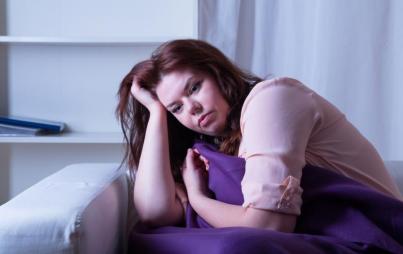
Hulu’s adaptation of the Margaret Atwood novel The Handmaid’s Tale has been the subject of countless pop culture critique think-pieces since it premiered last month. Critics have dissected the ways the show is handling representation, particularly with regards to race and the fact that in the source text, black people are completely absent because the leaders of Gilead have rounded them up and resettled them to North Dakota. As Phil Maciak points out, the show’s producers faced somewhat of a catch-22 in terms of casting: while there would be inevitable fallout if only white actors had been cast, in some ways this decision glosses over the white supremacist ideology of Gilead's leaders as represented in Atwood’s novel. In this vein, Soraya McDonald issues an important critique of Atwood and showrunner Bruce Miller's unrealistic claims of a postracial Gilead where fertility trumps racism.
Notwithstanding the showrunners’ decision to include non-white actors without really addressing issues of race, The Handmaid’s Tale is a powerful and harrowing adaptation and an explicitly feminist critique of patriarchy gone rogue.
However, the show has another representational problem: a notable absence of fat women among the handmaids.
I've counted exactly three fat women in the six episodes that have aired, two of whom are wives who definitely belong to the category of “small fat,” as they look to be about a size 14-16, which is currently the size of the average American woman. First, there’s Aunt Lydia, the cruel, matronly boss of the handmaids, who is clearly not of child-bearing age anymore. Then, in episode two, one of the wives helping out the non-biological mother/wife for whom handmaid Janine is giving birth is noticeably plump. She can be seen in the scene participating in an utterly ridiculous ritual that is sure to infuriate anyone who has actually gone through childbirth, in which the non-biological mother feigns labor while Janine is in actual labor. Finally, in episode five, the wife to whose house Oflgen has been assigned appears to be a plus-size woman.
"The Handmaid’s Tale should have done better by fat women."
Given that the only requirement to be forced into handmaiden-hood is fertility, I find it quite strange that I have seen not one handmaid who looks to be the size of the average American woman; all of them conform to the normative body requirements of Hollywood. In fact, not only does there not seem to have been an effort by the showrunners to view body positivity and fat acceptance as important in their representational decisions in a show whose cast is overwhelmingly female, but there may have even been a “thinning down” of the cast. In Atwood's book, Ofglen, played by the painfully thin Alexis Bledel, is described by Offred as having a "plump" face. Why don’t we see a plump actress playing Ofglen?
Even if she hadn't been described that way in the book, given that the showrunners have decided to make changes to address potential problems of racial representation, there is really no good reason not to present a range of female bodies on a show explicitly advocating a feminist message.
Is the audience meant to read something into the fact that the only fat women on the show are aunts and wives (non-fertile women); in other words, is the show making some sort of veiled statement about a correlation between body size and fertility? It’s possible, but highly unlikely. There is research suggesting a link between clinical obesity and difficulty conceiving (for example), but fat women are not inherently less fertile. Furthermore, given that the issue is not addressed at all in Atwood’s novel – and the likelihood that few research studies exploring this link had been conducted at the time of its first publication, 1986 – it is much more probable that the failure to include diverse body types in the television adaptation was a major oversight.
Of course, Hollywood’s willful ignorance with regards to fat acceptance is nothing new, as there is an overwhelming lack of visibility of diverse female body types in film and television. Crazy Ex-Girlfriend, Orange Is the New Black, and This Is Us are notable exceptions to the rule, with the first gloriously and hilariously breaking the unwritten rule of “no belly flab” on television. This Is Us breaks from the mold by showing us a fat woman who, although her story line revolves largely around her weight, is sexually desirable and pursued by multiple men.
The Handmaid’s Tale should have done better by fat women. Like Orange Is the New Black, it is a show ripe with possibility for the representation of diverse female body types. The dystopian nature of this story and its parallels with the current political reality of the United States have been lost on no one. As for Trump, among his many disgusting offenses are his admission to sexual assault, and his fat-shaming of women in the spotlight – whether Rosie O’Donnell or former Miss Universe Alicia Machado.
Even more than Trump, who has shown himself to be a money-driven greed demon more than an ideologue, Vice President Pence embodies the deeply patriarchal and regressive thinking of Gilead, in which women are only useful for their ability to reproduce. One way to interpret his infamous rule about not dining alone with a woman who is not his wife is that he doesn’t believe women should hold positions of power. If he holds to this rule, how can he possibly engage in high-level and/or sensitive diplomacy with female foreign leaders? As cited in an article in the LA Times, UCLA lecturer Kim Elsesser also views this rule as exhibiting gender discrimination: “If you don’t go out to dinner with a woman, it’s hard to have a woman be your campaign manager or your chief of staff or whoever you need to regularly meet with.”
Surely the showrunners of The Handmaid’s Tale foresaw the parallels that would be made between Gilead and the United States under Trump/Pence, since they admit to having been influenced in the writing and editing of the show by the misogyny toward Hillary Clinton dished out by Trump and his supporters during the campaign. It’s too bad that they didn’t also view fat-shaming and the persistent myth that thin people are inherently healthier than fat people as issues for the show to address.
Given the various updates and adaptations the show’s script made to Atwood’s novel, this was not out of the realm of possibility. It still isn’t.
The show has already been renewed by Hulu for a second season. The writers and showrunners would do well to include more diverse female body types, and to explicitly address the ways our society’s obsession with thinness relates to repressive attempts to control women’s bodies.








